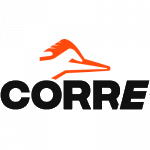

แทงบอลออนไลน์ เว็บแม่ UFABET สล็อตเว็บตรง ฝาก-ถอน ไม่อั้น ทำเทิร์นน้อย
UFABET เป็นเว็บไซต์แทงบอลออนไลน์ที่ได้รับความนิยมอย่างแพร่หลายในประเทศไทย โดยเป็นเว็บแม่ UFABET ที่ไม่ผ่านเอเย่นต์ ทำให้ผู้เล่นมั่นใจในความปลอดภัยและความน่าเชื่อถือ นอกจากนี้ยังมีบริการสล็อตเว็บตรงที่มาพร้อมระบบฝาก-ถอน ไม่อั้น และทำเทิร์นน้อย เพื่อให้ผู้เล่นสามารถเพลิดเพลินกับการเดิมพันได้อย่างเต็มที่ ไม่ว่าจะเป็นแทงบอลออนไลน์หรือสล็อตออนไลน์ UFABET มอบประสบการณ์การเดิมพันที่ครบครันและคุ้มค่าในทุกด้านเว็บแม่ UFABET เป็นเว็บไซต์แทงบอลออนไลน์ที่มีชื่อเสียงและได้รับความนิยมอย่างแพร่หลายในประเทศไทย โดยเป็นเว็บตรงที่ไม่ผ่านเอเย่นต์ ทำให้ผู้เล่นสามารถเข้าถึงการเดิมพันได้โดยตรง ซึ่งช่วยเพิ่มความปลอดภัยและความมั่นใจในการเล่น UFABET เป็นเว็บไซต์แทงบอลออนไลน์ที่ได้รับความนิยมและความเชื่อถือจากผู้เล่นทั่วโลก ด้วยการเป็นเว็บตรงไม่ผ่านเอเย่นต์ ทำให้ผู้เล่นมั่นใจในความปลอดภัยและความโปร่งใสในการให้บริการ ผู้เล่นสามารถเริ่มต้นแทงบอลด้วยเงินเพียง 10 บาท และการเดิมพันบอลสเต็ปเริ่มต้นที่ 2 คู่ ทำให้เหมาะสำหรับผู้ที่มีงบประมาณจำกัด การแทงบอลออนไลน์กับเว็บแม่ UFABET ยังมีการถ่ายทอดสดการแข่งขัน สมาชิกสามารถรับชมการแข่งขันฟุตบอลสดผ่านเว็บไซต์ ทั้งพรีเมียร์ลีก ลาลีกา และลีกอื่น ๆ โดยไม่มีค่าใช้จ่ายเพิ่มเติม
สำหรับสล็อตเว็บตรง UFABET นำเสนอการเดิมพันที่หลากหลายและน่าสนใจ สล็อตเว็บตรงเป็นตัวเลือกที่เหมาะสำหรับผู้เล่นที่ต้องการความมั่นคงและปลอดภัย เว็บคาสิโนออนไลน์ให้บริการโดยตรงจากผู้ให้บริการหลักโดยไม่ต้องผ่านเอเย่นต์ ทำให้มั่นใจได้ว่าการเดิมพันจะโปร่งใสและได้มาตรฐาน สล็อตเว็บตรงของเรามาพร้อมระบบ Slot True Wallet หรือสล็อตรับวอเลท ที่ช่วยให้การฝากถอนผ่านทรูวอเลทเป็นเรื่องง่ายและรวดเร็ว ใช้เวลาเพียง 20 วินาที ในการฝาก-ถอน เริ่มต้นเพียง 1 บาท ก็เล่นได้ทันที ไม่ต้องรอนาน เหมาะสำหรับผู้เล่นทุกระดับ เพิ่มความสะดวกสบายและความคล่องตัวในการใช้งาน มั่นใจได้ว่าทุกธุรกรรมปลอดภัย ผ่านระบบอัตโนมัติที่ได้มาตรฐานระดับสากลระบบฝาก-ถอน ไม่อั้น เป็นจุดเด่นที่ทำให้ UFABET โดดเด่นกว่าเว็บอื่น ๆ UFABET มีระบบฝาก-ถอนอัตโนมัติที่รวดเร็วและปลอดภัย ทำให้ผู้เล่นสามารถทำธุรกรรมได้อย่างสะดวกสบาย สล็อตเว็บตรงไม่ผ่านเอเย่นต์ เริ่มต้น 1 บาท มีทรูวอเลท ถอนได้ไม่อั้น การเป็นเว็บตรงหมายความว่าผู้เล่นสามารถทำธุรกรรมการเงินและการวางเดิมพันได้โดยตรงกับเว็บไซต์หลัก ลดความเสี่ยงจากการถูกโกงหรือปัญหาอื่น ๆ ที่อาจเกิดขึ้นจากการผ่านเอเย่นต์ รองรับระบบ slot true wallet ฝาก-ถอนไม่มีขั้นต่ำ เพียง 20 วินาที ด้วยระบบฝากถอนอัตโนมัติที่ได้รับการยอมรับว่ามีความปลอดภัยสูงสุด คุณสามารถดำเนินการธุรกรรมทางการเงิน ไม่ว่าจะเป็นการฝากหรือถอนเงิน ได้อย่างอิสระและรวดเร็วโดยไม่ต้องผ่านคนกลาง
การทำเทิร์นน้อยเป็นอีกหนึ่งข้อดีที่ UFABET มอบให้กับผู้เล่น UFABET เว็บคาสิโนแตกหนัก สมัครสมาชิกอนุมัติไว ไม่จำต้องทำเทิร์นโอเวอร์ ทางเข้าที่ไม่มีการเอาเปรียบสมาชิกทุกระดับ UFABET ที่รับประกันได้เลยว่าการจ่ายเงินรางวัลแต่ละครั้ง เป็นไปตามหลักมาตรฐานสากล ที่สำคัญไม่มีการทำเทิร์นมากวนใจสมาชิกอย่างแน่นอน ผู้เล่นสามารถถอนเงินรางวัลใหญ่ได้ไม่จำกัด ที่นี่คือเส้นทางสู่ความมั่งคั่งจากการแทงบอลออนไลน์อย่างแท้จริง UFABET รับโบนัสได้ทุกวัน UFA โปรโมชั่นจัดเต็มเยอะ ไม่ต้องทำเทิร์นโอเวอร์ เตรียมแจกโปรโมชั่นสุดพิเศษ มอบให้กับสมาชิก ได้รับกันตลอดทุกสัปดาห์ มีหลากหลายโปรโมชั่นมากขึ้น ไม่ว่าจะเป็นการคืนยอดเสีย โปรโมชั่นการแนะนำเพื่อน เข้ามาสมัคร และโปรโมชั่นอื่นๆ อีกมากมาย เมื่อนำไปต่อยอดเดิมพันคาสิโนออนไลน์แต่ละประเภท ก็ไม่ต้องทำเทิร์นให้ยุ่งยาก
เว็บแม่ UFABET ยังมีบริการลูกค้าที่เป็นเลิศ ทีมงานบริการตลอด 24 ชั่วโมง มืออาชีพ เรามีทีมงานสล็อตเว็บตรงมืออาชีพคอยให้บริการและช่วยเหลือตลอด 24 ชั่วโมง ไม่ว่าจะเป็นการสอบถามข้อมูล หรือการแก้ไขปัญหาต่าง ๆ มีทีมงานของเราพร้อมให้คำแนะนำและดูแลทุกขั้นตอนเพื่อให้คุณได้รับประสบการณ์การเดิมพันที่ดีที่สุด UFABET มีทีมงานบริการลูกค้าที่พร้อมให้ความช่วยเหลือตลอด 24 ชั่วโมง หากคุณมีข้อสงสัยหรือปัญหาใด ๆ สามารถติดต่อเราได้ทุกเมื่อผ่านช่องทางต่าง ๆ ไม่ว่าจะเป็นแชทสด โทรศัพท์ หรืออีเมล บริการแทงบอลออนไลน์ตลอด 24 ชั่วโมง เพื่อให้คุณสามารถเพลิดเพลินกับการเดิมพันได้อย่างไร้กังวล ไม่ว่าจะเป็นเวลากลางวันหรือกลางคืน คุณก็สามารถจัดการทุกอย่างได้ด้วยตัวเองอย่างมั่นใจในด้านเทคโนโลยี UFABET ใช้ระบบที่ทันสมัยและเสถียร สล็อตเว็บตรงระบบออโต้ 100% ปลอดภัย มั่นคง เล่นได้ทุกอุปกรณ์ ด้วยเทคโนโลยีที่ทันสมัยจากทีมงานของเรา คุณสามารถแทงบอล 10 บาท ได้ผ่านมือถือ ทั้งระบบ Android และ iPhone สะดวก รวดเร็ว เล่นได้ทุกที่ทุกเวลา ทางเข้าแทงบอลไม่มีขั้นต่ำ เล่นผ่านมือถือ ระบบเสถียร เรามีระบบรักษาความปลอดภัย SSL ที่มั่นคงและการจัดการหลังบ้านโดยทีมโปรแกรมเมอร์ผู้เชี่ยวชาญ เพื่อมอบประสบการณ์การแทงบอลออนไลน์ที่ยอดเยี่ยมที่สุดให้กับคุณ สล็อตเว็บตรง 100% ใช้ API แท้จากต่างประเทศ เว็บสล็อตของเรานำเข้า API แท้จากผู้ให้บริการต่างประเทศโดยตรง สล็อตเว็บตรงเว็บแท้ 100% รับประกันความปลอดภัยและความโปร่งใสในการเดิมพันUFABET เป็นคาสิโนออนไลน์อันดับหนึ่งของประเทศไทยและเว็บไซต์สล็อตออนไลน์ มีสมาชิกออนไลน์หลายล้านคนและเกมส์เครดิตฟรีปี UFABET เป็นเว็บไซต์แทงบอลออนไลน์ที่ได้รับความนิยมและความไว้วางใจจากผู้เล่นทั้งในประเทศไทยและต่างประเทศ ด้วยระบบที่ปลอดภัยและบริการที่ครบครัน ไม่ว่าจะเป็นแทงบอลออนไลน์หรือสล็อตเว็บตรง ผู้เล่นสามารถมั่นใจได้ในมาตรฐานระดับสากลและความโปร่งใสที่เว็บแม่ UFABET มอบให้
ข่าวกีฬา ข่าวบอล วอลเลย์บอล สดทุกชนิดกีฬา ที่สุดข่าวกีฬาวันนี้
เกมกีฬาในวันนี้
Vargas Torres – Chacaritas FC
Oriente Petrolero – FC Universitario de Vinto
SV Sportboys Aruba – SV Atlantico Deportivo
Macondo FC – FC Milanso
Newell's Old Boys – Kimberley
Deportivo Táchira – Flamengo
Cerro Largo – Defensa y Justicia
Real Soacha Cundinamarca – Real Cartagena
AS Juventa – USC Bananier
Correcaminos UAT – Atlante
Limón Black Star – Uruguay de Coronado
Spokane Zephyr FC – Brooklyn FC
Deacons Football Club – UWI Blackbirds
Suramericana de Transportes – Renco FC
CD Maracaneiros – Real Sporting Promatch
Nicaragua U17 – Puerto Rico U17
SD Atletico Nacional – Aguilas de la U
Real CD España – Juticalpa FC
Mushuc Runa – Palestino
Pudhuvai Unicorns – Roots FC
Lepea FC – Moata'a FC
Dyes FC – Roots FS
Daejeon Korail – Gangneung City
Addis Ababa Ketema – Arba Minch
St George Saints FC U20 – Central Coast Mariners FC
Hume City FC U21 – Oakleigh Cannons FC U21
Langfang Glory City FC – Beijing Institute of Technology
Hainan Star – Ganzhou Ruishi FC
Quanzhou Yaxin – Guangxi Hengchen FC
Adelaide City – FFSA NTC
Guizhou Zhucheng Athletic – Guangdong Mingtu
Shenzhen 2028 FC – Jiangxi Dark Horse Junior FC
Pari Nizhny Novgorod Youth – Krasnodar Youth
Bole – Lideta
BTM FC – Agorc
Jerusalem FC – Hapoel Bnei Ashdod
Heidelberg United Fc – Green Gully
Melbourne Knights – Preston Lions FC
St George Saints FC – Central Coast Mariners Academy
Box Hill United SC – Bentleigh Greens SC
Brisbane Roar – Macarthur FC
Dandenong City – Avondale FC
Monaro Panthers – Cooma Tigers
Cosenza U19 – Pisa U19
FK Ušće Novi Beograd – FK Brodarac
Kosovo U19 – Kazakhstan U19
Adelaide Raiders – Playford City
Campbelltown City – Adelaide Comets
Broadmeadow Magic – Adamstown Rosebud
Australia – South Korea
Hellenic AC – Darwin Olympic SC
Ilaji FC U19 – Immaculate FC U19
Torul Belediye Gençlikspor – Gümüşhane 15 Şubatspor
St Albans Saints – Melbourne Victory Youth
Blacktown Spartans – University of NSW
Melbourne Victory Youth – St Albans Saints
Olympia FC Warriors – Taroona
Hume City – Oakleigh Cannons
Bentleigh Greens – Kingston City FC
Moreland City – Caroline Springs George Cross FC
Northcote City – FC Bulleen Lions
Adelaide United Youth – North Eastern MetroStars
Neroca FC – Klasa
Spring Hills FC – Boroondara Eagles
Adelaide City – Modbury Jets
West Torrens Birkalla – White City Woodville
Vorskla Poltava U19 – Zorya Luhansk U19
Armenia – Luxembourg
Kabadüz Belediyespor – Ordu Eskipazarspor
Orduspor – Ordu Doğaspor
Estonia U19 – Moldova U19
Faroe Islands U19 – Cyprus U19
West Adelaide SC – Adelaide Comets FC
Isparta 1965 Emrespor – Arena Parkspor
Zaraspor FK – Sivas Selçukluspor
Strogino Moscow Youth – Dinamo Makhachkala Youth
Torpedo Moscow Youth – Arsenal Tula Youth
Krylya Sovetov Youth – Dynamo Moscow Youth
NK Krka U19 – Ilirija 1911 U19
Ironi Beit Dagan – Maccabi Amidar Ramat Gan U19
MS Bnei Jaffa Ortodoxim – Maccabi Givat Shmuel
Caboolture FC – Southside Eagles FC
Croatia U19 – Lithuania U19
Kerala United FC – Muthoot FA
AIFF U-17 – Inter Kashi
Deportivo Recoleta Reserve – General Caballero Reserve
SKS Poznańska 13 Poznań U17 – Zagłębie Lubin U17
Hapoel Azor – Hapoel Bnei Lod
Maccabi Ironi Kiryat Malakhi – Sport Club Dimona
Maccabi Shaaraim – Hapoel Marmorek
Maccabi Yavne – FC Holon Yermiyahu
MKA FA U19 – Utmost FC U19
Maccabi Ironi Ashdod – AS Nordia Jerusalem
Chornomorets Odesa U19 – LNZ Cherkasy U19
Kahramanmaraş Kurtuluş Spor – Kahta 02 Spor
Balgatspor – Beypazarı Belediyesi SK
Başkent Hürriyetspor – İstatistik GSK
Davutlar Belediyespor – Işıklı Spor
Sur Bağıvar Gençlik – Diyarin-Ter Spor F.
Surkent 21 Gençlik – Pasur Belediyespor

สารบัญ
เว็บตรงแทงบอล ยูฟ่าเบท ระบบออโต้ เว็บบอล มาตรฐานสากล
ยูฟ่าเบท (UFABET) เว็บหลัก เว็บแม่ กำลังได้รับความนิยมมาแรงมากที่สุดในปี 2025 ด้วยสถานะ เว็บแทงบอลออนไลน์ อันดับ 1 ที่เป็นมาตรฐานระดับสากล เรารวบรวมมาไว้ให้แก่นักเดิมพันทุกท่านแล้วในวันนี้ ด้วยบริการ ฝาก-ถอนไม่มีขั้นต่ำ เริ่มต้นเพียง 5 บาท พร้อม ราคาน้ำดีที่สุด เช่น ค่าน้ำ 1.84 สูงกว่าเว็บอื่น 0.04 จุด การแทงบอลสูงสุด 2-12 คู่ ในยูฟ่าเบท เว็บแม่ ช่วยให้นักพนันสร้างรายได้แบบทวีคูณด้วยอัตราต่อรองแม่นยำ แทงบอลสเต็ปที่สามารถเดิมพันได้มากถึง 12 คู่ โดยใช้ ufabet ทางเข้า ผ่านมือถือได้ทุกอุปกรณ์ สำหรับเกมกีฬาที่มาแรงมากที่สุดในประเทศไทย เรามีระบบ แทงบอลสด แบบเรียลไทม์พร้อมสถิติอัปเดตทุก 10 วินาที เว็บบอลออนไลน์ UFABET ให้บริการความสนุกแบบครบวงจร ด้วยการรวม เกมกีฬาที่มาแรงมากที่สุดในประเทศไทย ไว้แบบครบครันในที่เดียวกับ ufabetเว็บตรง ไม่ว่าจะเป็น แทงบอลสด พร้อมสตรีมมิ่งภาพคมชัด Full HD สมัครufa วันนี้รับทันทีเครดิตฟรี 100% พร้อมรับโบนัสคาสิโนเพิ่ม 15% ข้อมูลส่วนตัวได้รับการปกป้องอย่างเต็มที่ นักพนันสามารถ เล่นได้ไม่อั้น ทุก 24 ชั่วโมงผ่านระบบ AI
ระบบแทงบอลสดอัปเดตข้อมูลแบบเรียลไทม์ทุก 0.5 วินาที พร้อมสถิติการแข่งขันและกราฟวิเคราะห์ช่วยตัดสินใจ เกมกีฬาที่มาแรงมากที่สุดในประเทศไทย อย่างมวยไทยและมวยสากลก็มีให้เลือกเดิมพันแบบไลฟ์สด ผ่านมาตรฐานระดับสากลสำหรับนักเดิมพันใหม่ สมัครตอนนี้รับทันทีเครดิตฟรี 100% ของยอดฝากแรกสูงสุด 5,000 บาท พิเศษสุดกับโปรโมชั่นแทงบอลสเต็ป รับโบนัสเพิ่ม 5% ทุกสัปดาห์เมื่อทำยอดเดิมพันครบ 10,000 บาท ระบบแนะนำการเดิมพันจากกูรูมืออาชีพช่วยเพิ่มโอกาสชนะรางวัลใหญ่ยูฟ่าเบท ทางเข้า ล่าสุดอัปเดตปี 2025 รองรับการเล่นได้ไม่อั้นผ่านทั้งคอมพิวเตอร์/สมาร์ทโฟน/แท็บเล็ต โดยไม่ลดประสิทธิภาพการทำงาน ฟีเจอร์พรีวิวเกมช่วยชมตัวอย่างการแข่งขันก่อนเริ่มแมตช์จริง พร้อมระบบแจ้งเตือนอัตโนมัติเมื่อมีการเปลี่ยนแปลงอัตราต่อรอง

แทงบอล ufabet (แทงบอลออนไลน์) รูปแบบการเดิมพันหลากหลาย
รูปแบบการเดิมพันหลากหลายของ ufabet ยังรวมถึงฟีเจอร์พิเศษเช่น การเดิมพันแบบครึ่งเวลา/เต็มเวลา การทายผลผู้ทำประตูแรก และการเดิมพันแบบผสมผสานระหว่างกีฬาประเภทต่างๆ นักพนันสามารถสร้างสรรค์กลยุทธ์การเดิมพันได้อย่างอิสระตามความชำนาญการแทงบอล ufabet (แทงบอลออนไลน์) เป็นรูปแบบการเดิมพันที่หลากหลายและตอบโจทย์นักพนันยุคใหม่ ด้วยบริการแทงบอลออนไลน์ครบวงจรผ่าน ufabet เว็บตรง ที่มาพร้อมระบบฝาก-ถอนอัตโนมัติแบบเรียลไทม์ รองรับการเดิมพันได้ทุกอุปกรณ์ทั้งคอมพิวเตอร์ สมาร์ทโฟน และแท็บเล็ต โดยไม่ต้องดาวน์โหลดแอปพลิเคชันรูปแบบการเดิมพันหลากหลายของ ufabet ครอบคลุมทุกความต้องการ ตั้งแต่การแทงบอลเดี่ยวแบบพื้นฐานไปจนถึงบอลสเต็ปสูงสุด 12 คู่ พร้อมอัตราค่าน้ำแข่งขันที่ให้ผลตอบแทนสูงกว่าเว็บทั่วไป ตัวอย่างเช่น การเดิมพันแบบแฮนดิแคปที่ช่วยปรับสมดุลการแข่งขันระหว่างทีมที่มีความแตกต่างด้านความแข็งแกร่งอย่างชัดเจน หรือการทายผลสกอร์แบบแม่นยำที่ให้อัตราจ่ายสูงเป็นพิเศษ
- แทงบอลเดี่ยว (Single Bet) - การเดิมพันผลการแข่งขันแบบทีมต่อทีม
- บอลสเต็ป (Parlay Bet) - รวมการเดิมพันหลายคู่ในตicketเดียว
- แฮนดิแคป (Handicap) - การปรับแต้มต่อเพื่อสร้างความเท่าเทียม
- สูง/ต่ำ (Over/Under) - การทายผลรวมประตูในแมตช์
- ทายสกอร์ (Correct Score) - การทำนายผลคะแนนแบบเจาะจง
- บอลสด (Live Betting) - การเดิมพันแบบเรียลไทม์ระหว่างแข่ง
ufabet ทางเข้า ที่ออกแบบมาอย่างทันสมัยรองรับการใช้งานผ่านมือถือทุกระบบ ทั้ง iOS และ Android ด้วยระบบรักษาความปลอดภัย SSL มาตรฐานสากล ช่วยป้องกันข้อมูลส่วนตัวและธุรกรรมทางการเงิน ผู้ใช้สามารถเดิมพันได้อย่างมั่นใจแม้ในเกมการแข่งขันสำคัญระดับโลกอย่างพรีเมียร์ลีกหรือฟุตบอลโลกบริการ แทงบอล ออนไลน์ของ ufabet โดดเด่นด้วยระบบเงินฝาก-ถอนอัตโนมัติที่เร็วที่สุดในวงการ เริ่มต้นฝากขั้นต่ำเพียง 20 บาท โดยไม่มีค่าธรรมเนียมและไม่จำกัดจำนวนครั้งต่อวัน ใช้เทคโนโลยี AI ในการประมวลผลธุรกรรมภายในไม่กี่วินาที รองรับช่องทางธนาคารหลักทุกแห่งในประเทศไทย มาแนะนำตัวอย่างการแทงบอลออนไลน์ยอดนิยมให้แก่นักเดิมพันกัน สำหรับมือใหม่แนะนำเริ่มจากบอลเดี่ยวก่อน โดยเลือกคู่แข่งขันจากลีกดังอย่างพรีเมียร์ลีกอังกฤษ วิเคราะห์รูปแบบทีมและสถิติล่าสุด จากนั้นกำหนดจำนวนเงินเดิมพันตามงบประมาณ เมื่อชนะเดิมพันจะได้รับเงินรางวัลทันทีเข้าบัญชี ด้วยเทคโนโลยีที่ทันสมัยจากทีมงานของเรา คุณสามารถ แทงบอล 10 บาท ได้ผ่านมือถือ ทั้งระบบ Android และ iPhone สะดวก รวดเร็ว เล่นได้ทุกที่ทุกเวลา หากคุณหลงใหลในการแทงบอลกับเว็บชั้นนำ คุณไม่ควรพลาดโอกาสนี้ เพราะเราเป็นทางเข้าที่มีการอัปเดตใหม่ล่าสุด ให้คุณสามารถเข้าถึงได้จากทุกอุปกรณ์ ไม่ว่าจะเป็นคอมพิวเตอร์ แท็บเล็ต หรือสมาร์ทโฟนทั้งระบบ iOS และ Android เรามีระบบรักษาความปลอดภัย SSL ที่มั่นคงและการจัดการหลังบ้านโดยทีมโปรแกรมเมอร์ผู้เชี่ยวชาญ เพื่อมอบประสบการณ์การแทงบอลออนไลน์ที่ยอดเยี่ยมที่สุดให้กับคุณ ระบบของเราออกแบบมาเพื่อรองรับการใช้งานบนมือถืออย่างเต็มรูปแบบ ไม่ว่าคุณจะใช้ iOS หรือ Android การแสดงผลและการทำงานของเว็บไซต์จะเป็นไปอย่างราบรื่นและไร้รอยต่อ การเดิมพันผ่านมือถือจึงกลายเป็นเรื่องง่ายและสะดวกสบาย คุณสามารถเข้าถึงทุกฟังก์ชั่นได้เพียงปลายนิ้วสัมผัส
ufabet เว็บตรง มอบประสบการณ์การเล่นแบบพรีเมียมด้วยคุณสมบัติเหล่านี้นอกจากนี้ UFABET ยังมีบริการคาสิโนออนไลน์ครบวงจร เพื่อตอบสนองความต้องการของผู้เล่นที่หลากหลาย สล็อตเว็บตรง เป็นตัวเลือกที่เหมาะ สำหรับผู้เล่นที่ต้องการความมั่นคงและปลอดภัย ให้บริการโดยตรงจากผู้ให้บริการหลักโดยไม่ต้องผ่านเอเย่นต์ ทำให้มั่นใจได้ว่าการเดิมพันจะโปร่งใสและได้มาตรฐาน จาก สล็อตเว็บตรง ที่มีคุณภาพสูง พร้อมระบบให้บริการทันสมัยที่สุดในไทย เราถูกออกแบบให้ผู้เล่นทุนน้อยก็เล่นสล็อตได้ รองรับการใช้งานผ่าน สล็อตวอเลท ไม่มีขั้นต่ำในการฝาก-ถอน ปั่นสล็อต มีโอกาสแตกสูง เราเป็น เว็บสล็อตแตกง่าย การันตีทำกำไรได้จริงจาก เว็บตรงสล็อต ของเรา สล็อตเว็บตรง ของเราเป็นแพลตฟอร์ม ที่ให้บริการโดย ผู้เล่นมั่นใจได้ว่าการเล่น สล็อต ปลอดภัย โปร่งใส และมีมาตรฐานสูง:
- ระบบแจ้งเตือนผลการแข่งขันและอัตราต่อรองล่าสุด
- แดชบอร์ดแสดงประวัติการเดิมพันแบบเรียลไทม์
- เครื่องมือคำนวณเงินรางวัลอัตโนมัติทุกประเภทการเดิมพัน
- แผนภูมิวิเคราะห์สถิติทีมและนักเตะแบบละเอียด
- บริการลูกค้าตลอด 24 ชั่วโมงผ่านช่องทางแชทสด โทรศัพท์ และอีเมล พร้อมทีมงานมืออาชีพที่ให้คำปรึกษาทุกขั้นตอนการเดิมพัน สำหรับสมาชิกใหม่มีโปรโมชั่นพิเศษทั้งเครดิตฟรีและโบนัสคืนยอดเสีย สร้างโอกาสทำกำไรได้แม้มีทุนน้อย
แทงบอลออนไลน์ UFABET เว็บแทงบอล ราคาน้ำบอลสูงกว่าเจ้าอื่น
แทงบอลออนไลน์ UFABET เว็บแทงบอล ที่ให้ราคาน้ำบอลสูงกว่าเจ้าอื่นอย่างชัดเจน ด้วยอัตราต่อรองที่ดีที่สุดในตลาด เราให้ค่าน้ำ 1.84 ในขณะที่เว็บอื่นให้เพียง 1.80 สำหรับการแข่งขันระดับเดียวกัน เช่น นัดระหว่างเรอัลมาดริดและบาร์เซโลนา การันตีว่าทุกการเดิมพันกับเราจะได้รับผลตอบแทนสูงสุด ราคาน้ำบอลสูงกว่าเจ้าอื่นนี้ทำให้สมาชิกสามารถทำกำไรได้มากกว่าถึง 10-20% เมื่อเทียบกับเว็บพนันทั่วไปเว็บแทงบอล UFABET โดดเด่นด้วยระบบราคาน้ำบอลสูงกว่าเจ้าอื่นในทุกการแข่งขัน ไม่ว่าจะเป็นพรีเมียร์ลีก ลาลีกา บุนเดสลีกา หรือแม้แต่ไทยลีก เรามีทีมงานนักวิเคราะห์มืออาชีพที่คำนวณอัตราต่อรองแบบให้ประโยชน์สูงสุดแก่ผู้เล่น ราคาน้ำบอลสูงกว่าเจ้าอื่นนี้เกิดจากการพัฒนาระบบอย่างต่อเนื่องโดยวิศวกรผู้เชี่ยวชาญ เพื่อให้สมาชิกได้รับประสบการณ์การเดิมพันที่เหนือระดับ
เว็บแทงบอลยูฟ่าเบท เว็บแทงบอลที่ดีที่สุด ราคาน้ำดีที่สุด เราให้ค่าน้ำในการแทงบอลที่สูงกว่าเจ้าอื่นเป็นอย่างมากเราไม่เพียงให้ค่าน้ำดี แต่ยังมีโปรโมชั่นเพิ่มมูลค่าการเดิมพัน เช่น โบนัส 5% สำหรับการแทงบอลสเต็ป 5 คู่ขึ้นไป ทำให้สมาชิกได้รับผลตอบแทนทวีคูณมากกว่าเว็บทั่วไปถึง 2 เท่าระบบฝาก-ถอนออโต้ของเรารองรับการเดิมพันราคาน้ำบอลสูงกว่าเจ้าอื่นได้อย่างเต็มประสิทธิภาพ คุณสามารถฝากเงินขั้นต่ำ 20 บาทและเริ่มแทงบอลได้ทันทีภายใน 30 วินาที พร้อมถอนเงินได้ไม่จำกัดจำนวนครั้งต่อวัน โดยไม่มีค่าธรรมเนียมใดๆ ทั้งสิ้น ความรวดเร็วนี้ช่วยให้คุณไม่พลาดโอกาสเดิมพันในราคาน้ำดีที่สุดแทงบอลออนไลน์กับ UFABET ที่รวมทุกความได้เปรียบไว้ในที่เดียว ทั้งราคาน้ำบอลสูงกว่าเจ้าอื่น บริการ 24 ชั่วโมง และเทคโนโลยีล้ำสมัย เว็บแทงบอลแห่งนี้พร้อมให้คุณเปรียบเทียบราคาน้ำบอลสูงกว่าเจ้าอื่นได้ด้วยตัวเองผ่านระบบ Live Odds Comparison ที่อัปเดตแบบเรียลไทม์ ดูสถิติการเปลี่ยนแปลงราคาน้ำทุก 10 วินาที พร้อมกราฟวิเคราะห์แนวโน้มการเดิมพัน ช่วยตัดสินใจวางเดิมพันได้แม่นยำยิ่งขึ้นสมัครวันนี้เพื่อสัมผัสประสบการณ์แทงบอลออนไลน์กับราคาน้ำบอลสูงกว่าเจ้าอื่นแบบไม่มีที่ติ เราให้คุณเปรียบเทียบราคากับเว็บคู่แข่งได้ก่อนเดิมพันจริง พร้อมบริการลูกค้าภาษาไทย 24 ชม. ที่พร้อมอธิบายรายละเอียดอัตราต่อรองทุกนัดทุกการคลิกเดิมพันกับเราคือโอกาสสร้างรายได้จากราคาน้ำบอลสูงกว่าเจ้าอื่น มาพิสูจน์ความแตกต่างด้วยตัวคุณเอง สมัครฟรีไม่เสียค่าใช้จ่าย เริ่มต้นได้ด้วยเงิน 10 บาท และรับเครดิตทดลองเล่นเพื่อสัมผัสความได้เปรียบของอัตราต่อรองแบบพรีเมียมแทงบอลออนไลน์วันนี้ที่ UFABET เว็บแทงบอลแห่งอนาคตที่การันตีราคาน้ำบอลสูงกว่าเจ้าอื่นในทุกการแข่งขัน ตรวจสอบได้ด้วยตาผ่านระบบเปรียบเทียบแบบ Side-by-Sode ก่อนวางเดิมพันจริง รับรองความโปร่งใสและความได้เปรียบที่วัดผลได้จริง
ประเภทการแทงบอล จาก UFA โดยตรงจาก UFABET
การแทงบอลออนไลน์ได้รับความนิยมอย่างแพร่หลายในทุกมุมโลก ไม่เว้นแม้แต่ในประเทศไทย เราได้กลายเป็นตัวเลือกยอดนิยมสำหรับผู้ที่ชื่นชอบการแทงบอล ด้วยความเรียบง่ายในการเล่นและความรวดเร็วในการทำกำไร ผู้เล่นสามารถเพลิดเพลินกับการวางเดิมพันและมั่นใจได้ว่าการถอนเงินเป็นไปอย่างราบรื่นและเชื่อถือได้ เว็บไซต์ของเราขยายการบริการครอบคลุมทั่วทั้งภูมิภาคเอเชีย พร้อมมอบประสบการณ์การใช้งานที่รวดเร็วและมีคุณภาพสูงสุดรูปแบบการแทงบอลในปัจจุบันมีความหลากหลายเพื่อตอบสนองความต้องการของนักเดิมพันที่หลากหลาย ได้แก่ บอลเดี่ยว (Single Bet) การวางเดิมพันในทีมที่คิดว่าจะชนะในการแข่งขันเพียงคู่เดียว บอลสเต็ป (Parlay Bet) การเดิมพันในหลายคู่พร้อมกัน โดยจะต้องทายผลถูกทุกคู่เพื่อรับรางวัล ซึ่งให้ผลตอบแทนสูงกว่าบอลเดี่ยว แฮนดิแคป (Handicap) การเดิมพันที่มีการต่อรองระหว่างทีมที่มีความแข็งแกร่งแตกต่างกัน เพื่อให้การแข่งขันมีความเท่าเทียมมากขึ้น สูง/ต่ำ (Over/Under) การทายผลรวมของคะแนนว่าจะสูงหรือต่ำกว่าค่าที่กำหนนอกจากนี้ยังมีรูปแบบการแทงบอลครึ่งแรก/ครึ่งหลัง (Half-time/Full-time) การเดิมพันผลการแข่งขันในครึ่งแรกหรือเต็มเวลา ทายสกอร์ (Correct Score) การทายผลสกอร์ที่แน่นอนของการแข่งขัน และแทงบอลคู่/คี่ (Odd/Even) การเดิมพันว่าผลรวมของคะแนนจะออกมาเป็นเลขคู่หรือเลขคี่ อัตราการจ่ายเงินรางวัลในการแทงบอลจะแตกต่างกันไปตามประเภทการเดิมพันและความเสี่ยงที่เกี่ยวข้องด
- แทงบอลเต็งหรือบอลเดี่ยว
- แทงบอลชุดหรือบอลสเต็ป
- แทงบอลแบบสูง-ต่ำ
- แทงบอลแบบแฮนดิแคป
- แทงบอลครึ่งแรกและครึ่งหลัง
- แทงบอลแบบ 1X2
- แทงบอลแบบทายผลสกอร์
- แทงบอลแบบคู่-คี่
- แทงบอลสด
การแทงบอลแบบแฮนดิแคป อัตราการจ่ายขึ้นอยู่กับการต่อรองที่กำหนดไว้ โดยค่าน้ำจะสะท้อนถึงความน่าจะเป็นของผลลัพธ์ ส่วนการแทงสูง/ต่ำ ค่าน้ำจะกำหนดอัตราการจ่ายเงิน หากทายถูกจะได้รับตามค่าน้ำที่ระบุ การทายสกอร์มีอัตราการจ่ายสูงเพราะโอกาสทายถูกยากกว่า โดยค่าน้ำจะสูงขึ้นตามความยากของการทายผลUFABET เว็บดูบอลออนไลน์ ที่ได้รับความนิยมอันดับต้นๆของไทย และยังได้รับความไว้วางใจจากผู้ชมคอบอลหลายๆท่านอีกด้วย ดูบอลสด บนมือถือ ส่งตรงถึงผู้ชมทุกคน ด้วยระบบการฝากถอนเงินที่ไม่มีข้อจำกัด ทำให้การเริ่มต้นเพียง 10 บาทก็เพียงพอ และการทำธุรกรรมรวดเร็วเพียงไม่กี่วินาที เงินก็จะถูกเพิ่มเข้าสู่บัญชีทันที
แทงบอลออนไลน์ UFABET เว็บใหญ่ ต่อยอดกำไรได้จริง พร้อมความมั่นคงในระดับสูง
การแทงบอลออนไลน์ UFABET บนเว็บใหญ่ระดับต้นของไทยที่ให้บริการมาอย่างยาวนาน ได้รับความไว้วางใจจากผู้ใช้งานจริงทั่วประเทศ ด้วยระบบการเงินที่มั่นคงและเทคโนโลยีล้ำสมัยช่วยให้ต่อยอดกำไรได้จริง พร้อมความมั่นคงในระดับสูง เว็บไซต์ของเรามีการอัปเดตระบบฝาก-ถอนอัตโนมัติที่เสถียรที่สุดในปัจจุบัน ใช้เวลาเพียงไม่กี่วินาทีเท่านั้น เริ่มต้นเดิมพันขั้นต่ำเพียง 5 บาท รองรับการทำธุรกรรมผ่านทุกช่องทางธนาคารแบบไม่มีขั้นต่ำรูปแบบการแทงบอลออนไลน์ใน UFABET มีให้เลือกมากมายทั้งบอลเดี่ยว บอลสเต็ป 2-12 คู่ แฮนดิแคป สูง/ต่ำ โดยมีอัตราค่าน้ำดีที่สุดในท้องตลาด การแทงบอลสดแบบเรียลไทม์ช่วยเพิ่มโอกาสทำกำไรได้ทุกนาทีของการแข่งขัน พร้อมระบบวิเคราะห์ผลบอลจากกูรูมืออาชีพที่แม่นยำสูงสุด ข้อมูลสถิติอัปเดตแบบเรียลไทม์ช่วยให้ตัดสินใจเดิมพันได้ถูกต้องระบบความปลอดภัยระดับมาตรฐานสากลด้วยเทคโนโลยี SSL Encryption ปกป้องข้อมูลส่วนตัวและธุรกรรมทางการเงินอย่างเต็มรูปแบบ การันตีความน่าเชื่อถือด้วยจำนวนผู้ใช้งานจริงเกิน 100,000 บัญชี ทุกการเดิมพันได้รับการรับรองผลลัพธ์แบบยุติธรรม 100% ไม่มีการปรับเปลี่ยนอัตราต่อกลางคันมาตรฐานการให้บริการระดับพรีเมียมด้วยอัตราความพึงพอใจผู้ใช้ 98.7% จากแบบสำรวจล่าสุด มั่นใจได้ในทุกการลงทุนกับเว็บแทงบอลออนไลน์ที่ใหญ่ที่สุดและมั่นคงที่สุดในเอเชีย
ทางเข้า UFABET สมัครแทงบอล วิธีการเล่น ยูฟ่าเบท ผ่านมือถือ
UFABET เว็บดูบอลออนไลน์ ที่ได้รับความนิยมอันดับต้นๆของไทย ดูบอลสด บนมือถือ ส่งตรงถึงผู้ชมทุกคน ทางเข้า UFABET เข้าสู่ระบบผ่านอุปกรณ์ได้หลากหลายทั้งคอมพิวเตอร์, สมาร์ตโฟน, แท็ปเล็ต โดยเฉพาะการ ดูบอลสดผ่านมือถือฟรี ที่สะดวกสบายคมชัดทุกแมทซ์ สำหรับคอบอลที่ต้องการ สมัครแทงบอล ออนไลน์สามารถเริ่มต้นได้ด้วยขั้นตอนง่ายๆวิธีการเล่น ยูฟ่าเบท ผ่านมือถือ เริ่มจากเข้าสู่ระบบผ่านทางเข้าเล่น UFABET ที่รองรับทั้ง iOS และ Android ระบบออกแบบมาเพื่อใช้งานบนมือถือได้อย่างเต็มประสิทธิภาพ
- ขั้นตอนการสมัครสมาชิก: เข้าสู่หน้าเว็บไซต์หลัก > คลิกปุ่มสมัครสมาชิก > กรอกข้อมูลส่วนตัว > ตั้งชื่อผู้ใช้/รหัสผ่าน > ยืนยันตัวตนผ่าน SMS หรืออีเมล > ผูกบัญชีธนาคาร
- ระบบฝาก-ถอนอัตโนมัติ: ฝากขั้นต่ำ 20 บาท ใช้เวลาไม่กี่วินาที ถอนเงินได้ไม่จำกัดจำนวนต่อวันผ่านโมบายแบงกิ้ง รองรับทุกธนาคาร
- รูปแบบการแทงบอล: บอลเดี่ยว/สเต็ป/สูง-ต่ำ/แฮนดิแคป/ทายสกอร์ เริ่มเดิมพันตั้งแต่ 10 บาท พร้อมอัตราค่าน้ำดีที่สุด
- เว็บไซต์ใช้เทคโนโลยี SSL และระบบ AI ในการรักษาความปลอดภัยข้อมูล รับรองความน่าเชื่อถือด้วยมาตรฐานสากล มีทีมงานบริการลูกค้าตลอด 24 ชั่วโมงผ่านแชทสด โทรศัพท์ และอีเมล สำหรับผู้เริ่มต้นสามารถทดลองแทงบอล 10 บาท เพื่อศึกษากลยุทธ์การเดิมพัน
ข้อได้เปรียบหลักเมื่อเล่นผ่านมือถือคือความรวดเร็วและความคล่องตัว สามารถรับชมบอลสดพร้อมเดิมพันไปด้วยกันได้ในเวลาเดียวกัน ระบบออโต้ช่วยให้จัดการเงินได้ง่าย แม้มีทักษะการใช้สมาร์ทโฟนพื้นฐานก็เริ่มต้นได้ทันทีUFABET ยังมีโปรโมชั่นพิเศษสำหรับสมาชิกใหม่ เช่น เครดิตฟรีและโบนัสต้อนรับ สำหรับนักเดิมพันมืออาชีพ เว็บนี้มอบประสบการณ์การเล่นระดับพรีเมียมด้วยฟีเจอร์พิเศษ เช่น การเดิมพันสดแบบเรียลไทม์ สถิติการแข่งขันอัปเดตล่าสุด และทีเด็ดบอลจากกูรูมืออาชีพ สามารถสร้างรายได้หลักแสนจากเงินทุนเริ่มต้นเพียงเล็กน้อยปัจจุบันมีผู้ใช้งานมากกว่า 329,875+ คนทั่วประเทศ มั่นใจได้ในความมั่นคงทางการเงินด้วยทุนหมุนเวียนสูง พร้อมจ่ายเงินรางวัลไม่จำกัดจำนวน ระบบฝากถอนออโต้ทำงานได้เสถียรแม้มีผู้ใช้งานพร้อมกันสูงสุด 500,000+ คน
เว็บพนันบอลศูนย์รวมโปรโมชั่นที่ยกระดับความคุ้มค่าให้แก่นักเดิมพันมากยิ่งขึ้น
ศูนย์รวมโปรโมชั่นที่ยกระดับความคุ้มค่าให้แก่นักเดิมพันมากยิ่งขึ้นจาก UFABET มอบประสบการณ์พิเศษด้วยข้อเสนอที่ครบวงจรสำหรับนักพนันทุกประเภท เริ่มตั้งแต่การสมัครสมาชิกครั้งแรกที่รับเครดิตฟรีและโบนัสต้อนรับมากมาย จนถึงโปรโมชั่นรายสัปดาห์ที่เพิ่มโอกาสทำกำไรได้แบบไม่จำกัด
- ระบบฝาก-ถอนอัตโนมัติที่เร็วที่สุดในไทย รองรับการทำธุรกรรมได้ไม่จำกัดจำนวนครั้งต่อวัน
- ค่าธรรมเนียมการถอนเงิน 0% ทุกยอดการเดิมพัน ไม่มีเงื่อนไขแอบแฝงรับคอมมิชชั่นคืนสูงสุด 0.7% จากทุกยอดเดิมพันแบบเรียลไทม์
- โปรโมชั่นพิเศษสำหรับสมาชิกใหม่ ฝากครั้งแรกรับโบนัส 100% สูงสุด 5,000 บาท
- แจกเครดิตฟรีรายสัปดาห์สำหรับนักเดิมพันที่มียอดเล่นต่อเนื่อง
- ศูนย์รวมโปรโมชั่นที่ยกระดับความคุ้มค่าให้แก่นักเดิมพันมากยิ่งขึ้นด้วยข้อได้เปรียบเฉพาะตัวจากเว็บตรง ไม่ผ่านเอเย่นต์ นักพนันจะได้รับอัตราค่าน้ำดีที่สุดในตลาด เริ่มเดิมพันขั้นต่ำเพียง 5-10 บาท แต่ได้ผลตอบแทนสูงกว่าทุกที่ ด้วยระบบคำนวณอัตราจ่ายแบบทวีคูณในบอลสเต็ป 12 คู่
สมาชิกทุกคนจะได้รับสิทธิพิเศษจากศูนย์รวมโปรโมชั่นที่ยกระดับความคุ้มค่าให้แก่นักเดิมพันมากยิ่งขึ้นอย่างต่อเนื่อง ทั้งโบนัสเงินฝากรายวัน โปรโมชั่นแจกเฟรชชิปสำหรับการเดิมพันสด และรางวัลพิเศษสำหรับการทายผลเสมอติดต่อกัน 9 นัด ที่มอบเงินรางวัลสูงสุดถึงหลักล้าน
เหตุผลที่ท่านต้องเลือกเดิมพันกับเราที่นี่แทงบอล UFABET
เหตุผลที่ท่านต้องเลือกเดิมพันกับเราที่นี่แทงบอล UFABET เริ่มจากความสะดวกสบายในการดูบอลสดผ่านมือถือได้ทุกอุปกรณ์ทั้ง iOS และ Android พร้อมระบบถ่ายทอดสดคมชัดระดับ 24 ชั่วโมง ครอบคลุมทุกแมทซ์ทุกลีกดังทั้งพรีเมียร์ลีก ลาลีกา บุนเดสลีกา และฟุตบอลโลกระบบการเงินของเราให้ความรวดเร็วและปลอดภัยที่สุดด้วยเทคโนโลยีฝาก-ถอนออโต้แบบเรียลไทม์
- ฝากเงินขั้นต่ำเพียง 5-10 บาท เริ่มเดิมพันได้ทันทีภายในไม่กี่วินาที
- ถอนเงินได้ไม่จำกัดจำนวนครั้งต่อวัน ไม่มีค่าธรรมเนียม
- รองรับทุกช่องทางธนาคารและโมบายแบงกิ้ง
- ใช้ AI ตรวจสอบธุรกรรมอัตโนมัติ ไม่ต้องรอการอนุมัติ
- บริการลูกค้าคุณภาพระดับพรีเมียมพร้อมทีมงานมืออาชีพ
- ให้คำปรึกษาตลอด 24 ชั่วโมงผ่านแชทสดและโทรศัพท์
- แก้ไขปัญหาเทคนิคได้ทันทีไม่เกิน 3 นาที
- มีระบบแนะนำเทคนิคการแทงบอลจากกูรูผู้เชี่ยวชาญ
- อัปเดตข้อมูลผลบอลสดและสถิติการแข่งขันแบบเรียลไทม์
- ข้อได้เปรียบด้านอัตราต่อรองและโปรโมชั่น
- ค่าน้ำดีที่สุดในตลาด สูงกว่าเว็บทั่วไป 0.04-0.10 จุด
- รับคอมมิชชั่นคืนสูงสุด 0.7% ทุกยอดเดิมพัน
- โปรโมชั่นสมาชิกใหม่รับเครดิตฟรี 100%
- แจกทีเด็ดบอลแม่นยำจากนักวิเคราะห์มืออาชีพ
- มีระบบสะสมแต้มแลกของรางวัลพิเศษ
- เทคโนโลยีล้ำสมัยรองรับการใช้งานทุกแพลตฟอร์ม
- ออกแบบอินเตอร์เฟซใช้งานง่ายทั้งบนมือถือและคอมพิวเตอร์
- ความหลากหลายของรูปแบบการเดิมพัน
- แทงบอลเดี่ยว/สเต็ปได้สูงสุด 12 คู่
- มีตลาดเดิมพันครบวงจรทั้งแฮนดิแคป สูง/ต่ำ คู่/คี่
- เดิมพันสดระหว่างเกมได้ทันที
- ทายผลแบบ Exact Score ได้อัตราจ่ายสูง
- รองรับการเดิมพันกีฬาชนิดอื่นกว่า 20 ประเภท
- UFABET ได้รับการยอมรับจากผู้ใช้งานจริงกว่า 1 ล้านบัญชี มีฐานลูกค้าทั่วประเทศที่ไว้วางใจมากว่า 10 ปี ระบบการเงินมั่นคงด้วยเงินสำรองกว่า 1,000 ล้านบาท พร้อมใบรับรองมาตรฐานสากลจาก GLI และ eCOGRA
ด้วยสัดส่วนการจ่ายเงินรางวัลสูงสุด 97.8% เมื่อเทียบกับเว็บอื่นในตลาด ทำให้สมาชิกกว่า 85% ได้รับประสบการณ์การชนะเดิมพันครั้งแรกภายใน 7 วัน ระบบแนะนำการเดิมพันอัจฉริยะช่วยเพิ่มโอกาสทำกำไรได้จริง 30-50%
เว็บแทงบอลออนไลน์อันดับ 1 UFABET ใช้บริการกับเราไม่มีคำว่าผิดหวังอย่างแน่นอน
เว็บแทงบอลออนไลน์อันดับ 1 อย่าง UFABET ให้บริการครบวงจรทั้งการดูบอลสดและเดิมพันกีฬาแบบสดๆ ด้วยระบบถ่ายทอดสดคมชัดระดับ Full HD ไร้กระตุกตลอด 24 ชั่วโมง รองรับการรับชมผ่านทุกอุปกรณ์ทั้งคอมพิวเตอร์ สมาร์ทโฟน แท็บเล็ต ครบทุกแพลตฟอร์ม Windows, MacOS, iOS, Android และ TV คอบอลสามารถสนุกกับทุกลีกดังเช่นพรีเมียร์ลีก ลาลีกา บุนเดสลีกา ยูโรปาคอนเฟอเรนซ์ลีก ฟุตบอลโลก รวมถึงไทยลีกได้แบบครบจบในที่เดียวใช้บริการกับเราไม่มีคำว่าผิดหวังอย่างแน่นอน เพราะเราคือเว็บตรงไม่ผ่านเอเย่นต์ที่มีฐานผู้ใช้งานหลักล้านทั่วประเทศ ให้คุณเดิมพันบอลเดี่ยวได้สูงสุด 12 คู่ในบิลเดียว พร้อมโปรโมชั่นแจกเครดิตฟรีและคืนค่าคอมมิชชั่นสูงสุด 0.7% ทุกยอดเดิมพัน ระบบเดิมพันสดแบบ Real Time อัปเดตสถิติการแข่งขันแบบเรียลไทม์ พร้อมฟีเจอร์ Cash Out ควบคุมการลงทุนได้เองสำหรับคอบอลตัวจริง UFABET มีบริการดูบอลสดฟรีทุกคู่ทุกลีก ภาพคมชัดระดับ เว็บแทงบอลออนไลน์อันดับ 1 อย่างเรายังโดดเด่นด้วยระบบ Security แบบ Military Grade ป้องกันการแฮกข้อมูล
UFABET ใช้เทคโนโลยี AI ล้ำสมัยในการปรับปรุงประสบการณ์ผู้ใช้อย่างต่อเนื่อง อัพเดทระบบล่าสุดปี 2025 ด้วยฟังกชัน Auto Bet ที่ช่วยคำนวณโอกาสชนะเดิมพันแบบอัตโนมัติ พร้อมแดชบอร์ดแสดงสถิติการเล่นแบบ Customizable ที่ปรับแต่งได้ตามสไตล์การเดิมพันส่วนตัวสำหรับนักเดิมพันมือใหม่ เรามีระบบแนะนำการเดิมพันอัตโนมัติตามรูปแบบการเล่น พร้อมวิดีโอสอนใช้งานกว่า 200 คลิป ฟรีเครดิตทดลองเล่น 500 บาท เมื่อสมัครสมาชิกใหม่ และโปรแกรมสะสมแต้มแลกของรางวัลพิเศษกว่า 1,000 รายการเว็บแทงบอลออนไลน์อันดับ 1 แห่งนี้ยังเป็นผู้นำด้านนวัตกรรม ด้วยการเปิดตัวฟีเจอร์ Live Betting 2.0 ที่ให้เดิมพันระหว่างแข่งได้ทุก 30 วินาที พร้อมระบบ Virtual Reality ที่ให้สัมผัสประสบการณ์ดูบอลเสมือนอยู่ในสนามจริง 100%สำหรับนักเดิมพันที่ชอบความท้าทาย เราจัดทัวร์นาเมนต์พิเศษทุกสัปดาห์เช่น Premier League Prediction Challenge ที่ให้ลุ้นรับรางวัล Mercedes-AMG พร้อมเงินรางวัลรวมกว่า 10 ล้านบาทต่อเดือน UFABET ยังคงพัฒนาอย่างไม่หยุดยั้ง ด้วยแผนเปิดตัวฟีเจอร์ AI Predictor ที่ใช้ Machine Learning วิเคราะห์ผลการแข่งขันแม่นยำถึง 82.7% ในปี 2025 พร้อมขยายบริการครอบคลุม 50 ประเทศทั่วโลกคุณจะได้พบกับความตื่นเต้นและมั่นใจได้ว่าจะไม่มีปัญหาการถูกโกง เพียงเลือกใช้บริการกับเว็บไซต์คุณภาพที่มุ่งมั่นให้บริการด้วยมาตรฐานสูงสุด เว็บไซต์ของเรามีนักเดิมพันเข้ามาใช้บริการอย่างล้นหลาม โดยมีผู้ใช้งานมากกว่า 100,000 คน แทงบอลออนไลน์กับเราสะดวกสบาย เพราะเราเป็นเว็บหลักของยูฟ่าเบทที่เชี่ยวชาญในการให้บริการแทงบอลโดยตรง พร้อมมอบบริการที่มีคุณภาพแบบจัดเต็ม ด้วยประสบการณ์และความเชี่ยวชาญในวงการการพนันออนไลน์ UFABET ได้รับความไว้วางใจจากผู้เล่นทั่วประเทศ นอกจากนี้ยังมีการพัฒนาระบบและบริการอย่างต่อเนื่องเพื่อให้ผู้เล่นได้รับประสบการณ์ที่ดีที่สุด




































































































































Serie B
BETTING >